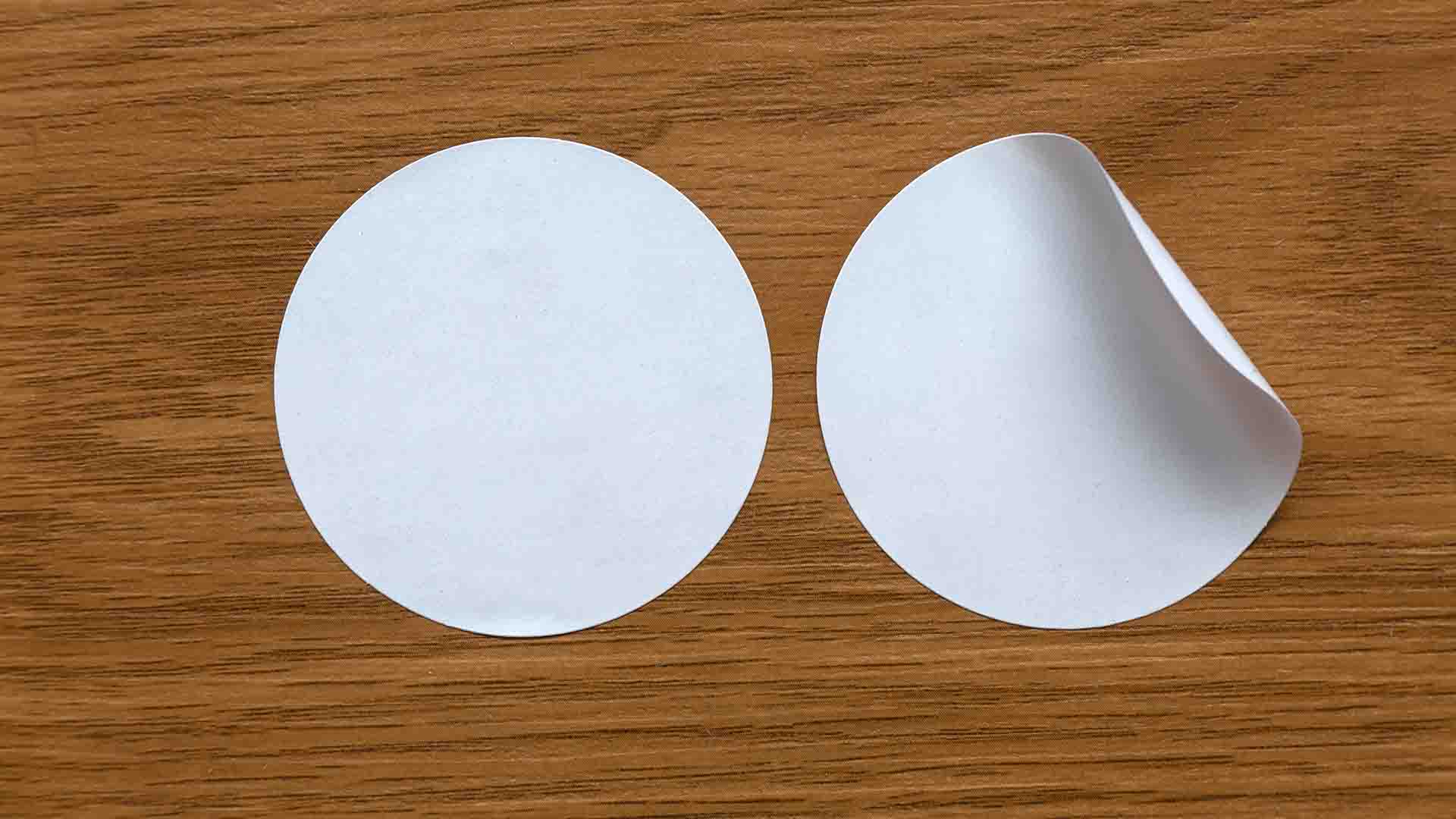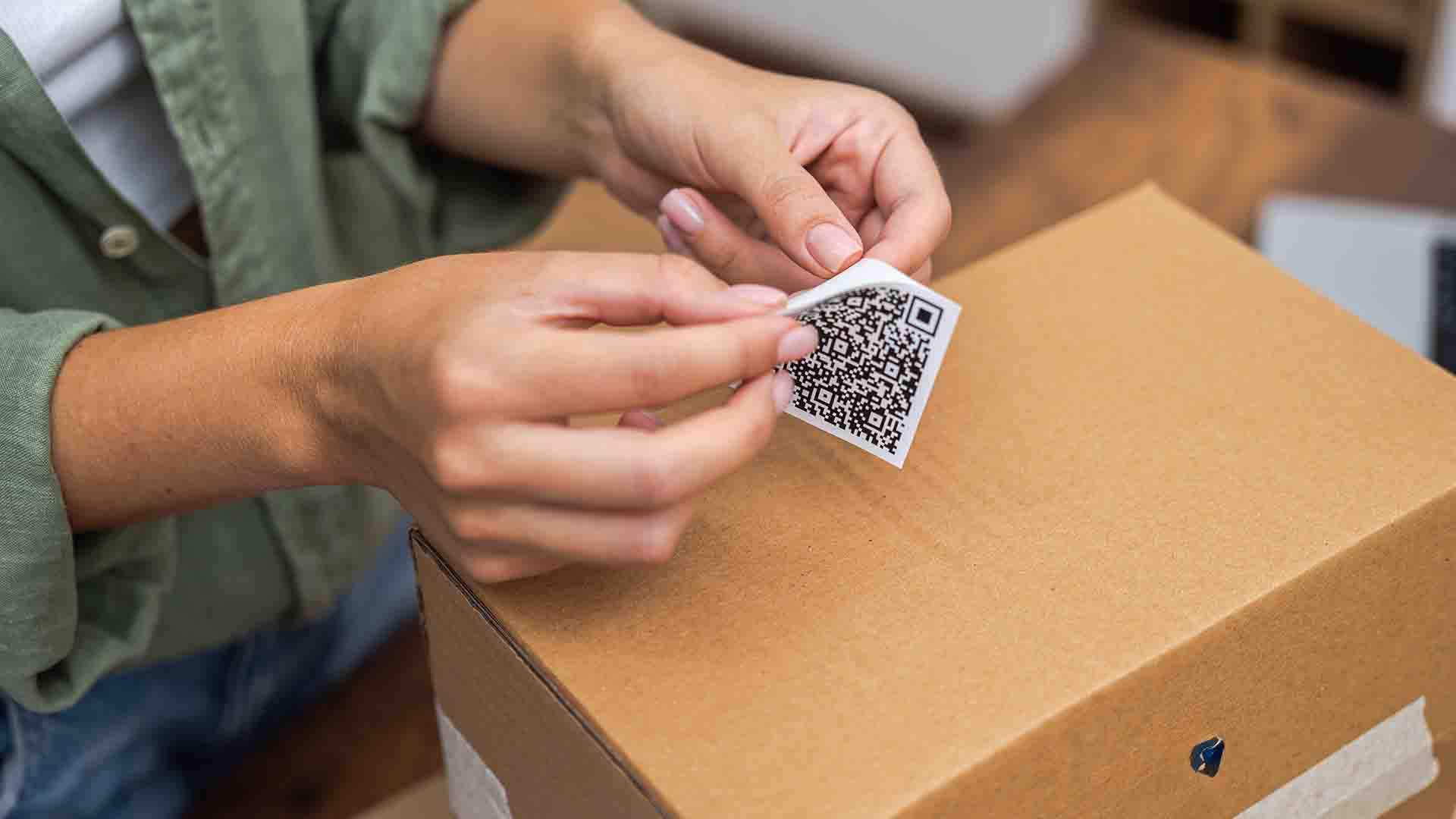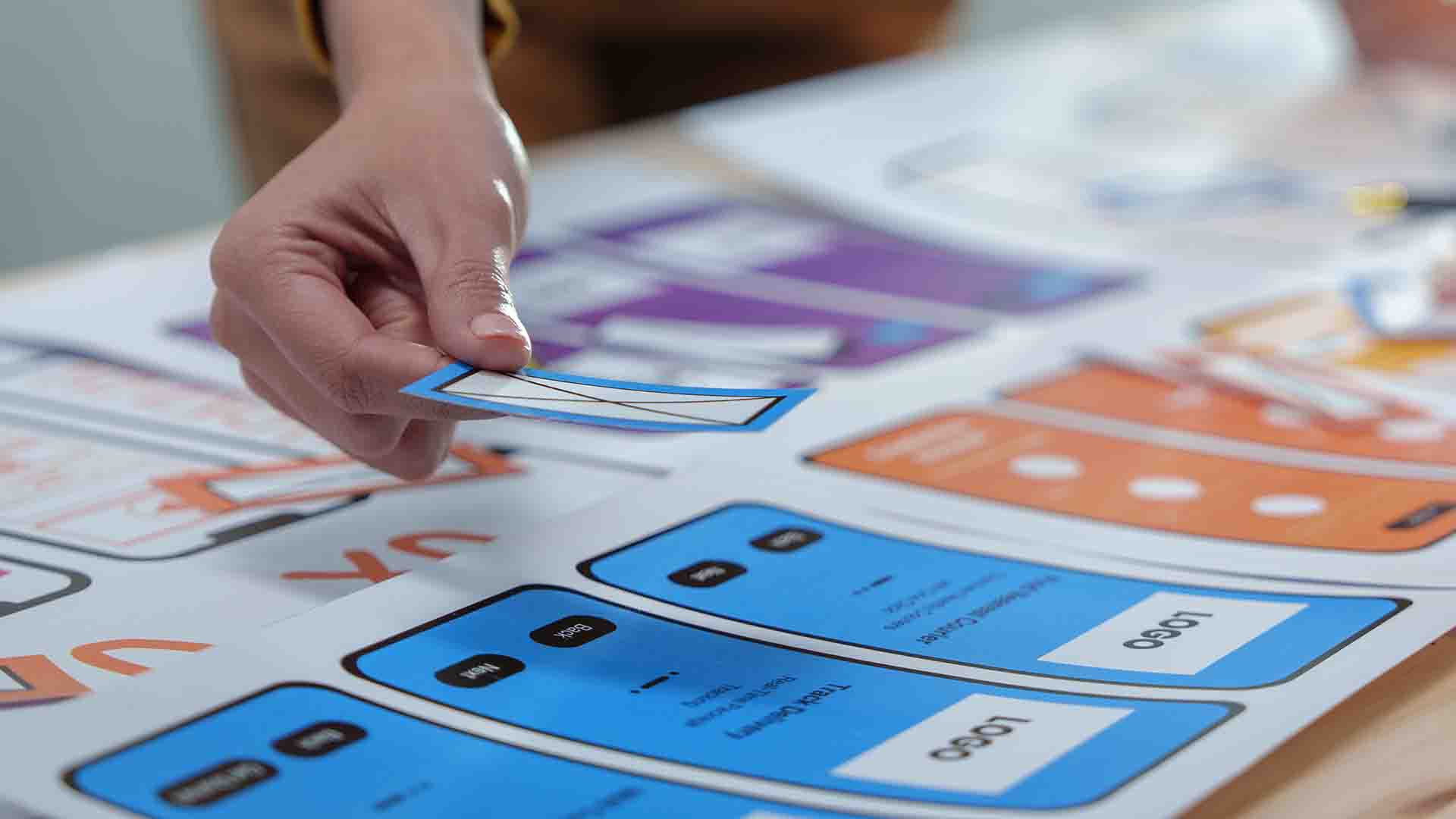

Paper stickers are cost-effective, look great on boxes, jars, dry surfaces inside the store. They are easy to print, give a natural, “creative” or eco-friendly impression, and can be matt or textured. If more scratch or moisture resistance is desired, a protective varnish or a thin lamination can be applied to the paper, but the paper will not be as waterproof as the film. In practice, you choose paper when good value for money, a beautiful image and internal conditions without intense moisture, grease or harsh cleaning chemicals are important.
It is often said in the market “vinyl” as a common name for film stickers, but technically PP, PE or PET films. Below is a brief overview of how they differ from paper and from each other. Film stickers made of PP, PE or PET are water and grease resistant, more elastic and stronger than paper. They are suitable for the bath, the refrigerator, outdoor conditions, frequent hand-holding and when the surface is prone to deformation. The film is available in clear for a ‘no-label look’, white for maximum colour saturation or metallic for a luxurious feel. If you need even more resistance to UV, chemicals or abrasion, apply lamination for an extremely durable solution.

PP, PE or PET?
PP film is the most versatile for everyday use. It is rigid, shines beautifully, reproduces colours and shape well, so the label stays straight and doesn’t crease. An excellent choice for cosmetics, household products, beverage bottles, refrigerator, but not for extreme deformation. If you want a clear label with a no-label look, clear PP is the first candidate. PE film is softer and more elastic. It adapts to curved or compressible/elastic packaging, such as cream tubes or flexible bottles. When the container is pressed, the PE will not split and will not come loose at the edges. The image is slightly softer than PP, but this is exactly what is needed when the surface is constantly moving. If the packaging is round, narrow or conical and the user presses it, PE will give the most stable result.
If the sticker will live in a dry room, on cardboard or a jar, and you want a good price and a “natural” feel, go for paper. If there will be water, steam, grease, lots of touching by hand or outdoors, choose film. Of the films, PP is suitable for “everything” and gives bright colours, PE is suitable for press packaging and strong bends, PET is suitable when you need maximum mechanical and thermal endurance or an ultra-clean transparent effect.
Nes mes ne tik tiekiame įrangą ar siūlome sprendimus – mes kuriame vertę, kurią jaučia Jūsų verslas kiekviename žingsnyje.
UAB „Vygėja“ – tai patikimas partneris, kuriam rūpi ne tik rezultatas, bet ir Jūsų kelias link jo.
Types of adhesive adhesives for adhesive labels
Naturally, the most important parameter when choosing a sticker is the adhesive. The adhesive we use for stickers is pressure sensitive. This means that they stick together under physical pressure, without the need for additional heating or hardeners. Two things determine the result the most: how much and what kind of chemistry is present in the adhesive layer, and what kind of surface and environmental conditions it will encounter. Glass and metal are usually the easiest to adhere to, rough cardboard requires a thicker adhesive layer, and PP and PE plastics have low surface energies and often require special “LSE” adhesives. We always distinguish between two temperature terms. Application temperature – the temperature at which the adhesive can be applied at all, as adhesives that are too cold become “glassy” and do not adhere. Working temperature – the range over which the adhesive will hold once it has been applied.
Acrylic glue
Acrylic adhesives are the most versatile and stable “family” of adhesives, especially when the product is exposed to longer life, sun, humidity or chemicals. They are less yellowing, adhere well on the outside, and are suitable for many food and cosmetic packaging applications where a clean, long-lasting bond is required. Acrylics are water-based and solvent-based. Water-based options cover most everyday needs, while solvent-based options have higher chemical and marine resistance and are used where certifications are required, such as on chemical canisters or for marine logistics. Acrylics generally have a slightly lower initial ‘tack’ but achieve a very high final adhesion within a day or two.
Rubber adhesive
Rubber adhesives, usually hot melt, have a very high initial tack. These are situations where the sticker needs to be “stuck” instantly: on rough cardboard, corrugated boxes, in a cold room or on a busy conveyor. These adhesives have the disadvantage of lower UV and high temperature resistance, which is why we choose acrylics for long term external conditions or aggressive chemical environments. If the goal is fast, cheap and reliable adhesion in a warehouse or for a parcel label, rubber adhesives are often the most sensible choice.
Specialised and wash-off adhesives
Specialised adhesives cover borderline situations. Freezer adhesives allow bonding down to several degrees below zero and maintain adhesion in the freezer, where ordinary adhesives would simply lift off. For wet and condensed containers, wet-bottle or ice-water resistant variants are used, which do not create white spots under the film and do not peel off water. For small-diameter bottles and curved or pressed packaging, we choose an adhesive with good bending adhesion to prevent the edges from coming loose; combined with a flexible PE film, this gives the best result. Low surface energy plastics such as PP or certain PEs require special LSE adhesives that “stick” to the slippery polymers. If recyclability is a priority, we use wash-off adhesives on PET bottles, which come off easily in wash-off baths and do not degrade the quality of rPET. When the label needs to show that it has been attempted to be peeled or opened, we use security adhesives in combination with special topcoats: frangibles, which crumble, or VOID-type solutions, which leave the label on peeling.
How to choose adhesives easily
A practical choice always starts with three questions. What is the surface – glass, metal, lacquer, PP or PE – and is it smooth, rough or deformable. What are the conditions – will there be water, lubricants, cleaning chemistry, UV, what will be the application temperature and in what range will the product live on. What behaviour is required – does the sticker have to stick for the life of the product, does it have to come off without traces after a week or three months, or is a recyclability solution with leaching required. Once we have the answers to these questions, the choice between acrylic, rubber or speciality adhesives becomes simple, and short test runs in production confirm that the choice works not only in theory, but also in real life.

Stickers with different effects create very different impressions and behave differently in production.
Transparent stickers
Transparent stickers give what is known as a “no-label look”, where the graphics appear to be simply printed on the packaging. Transparent PP or PET films and an ultra-clear adhesive are used to avoid a visible ‘milky’ streak under the edge. To keep the colours and text bright on a dark or coloured bottle, a white layer of ink is usually added underneath the design to act as a background. Clear stickers look best on smooth, glossy surfaces; if the bottle has an ‘orange peel’ texture or is heavily tapered, the effect may be diminished. It’s a great choice for cosmetics, beverages, premium chemical products and any time you’re looking for cleanliness and minimalism.
White adhesive labels
White stickers are the universal standard, providing maximum colour saturation, contrast and the clearest barcodes. You can choose matt, semi-matt or gloss to match the brand character: matt looks ‘softer’ and ‘greener’, gloss looks brighter and ‘cleaner’. White surfaces are the easiest to reproduce fine typography on, and logistics codes scan most reliably. If additional resistance to moisture or abrasion is needed, the surface is varnished or laminated. White stickers are the best starting point when price, colour accuracy and hassle-free daily use are the key.
Metallized adhesive labels
Metallized stickers give a mirrored silver or “brushed metal” effect on thin PP or PET film. Such surfaces “ignite” the metallic tones of gold, copper, rose gold and give a feeling of luxury without the need for real foiling forms or hot stamping. It is worth controlling the design with the ‘windows’ of the white layer: where you put white, the metallic sheen is suppressed and the colour becomes more stable; where there is no white, the colour ‘shines’ through the metal and takes on a mirror-like reflection. Black or dark colour and clear contrast work best on a metallic background to keep the text readable, leaving white areas for the barcodes. It’s the perfect choice for cosmetics, beverages, gifts and seasonal SKUs where a premium image is important.
Holographic adhesive labels
Holographic stickers have a diffractive, “rainbow” surface that changes when the packaging is moved. There are two paths: decorative common patterns “stars”, “waves”, “ice crystals” and individual security patterns with micro-elements useful for anti-counterfeiting. To keep the image uncluttered, the graphics combine a flooded white base and “windows” through which the holography shines, leaving clear areas for text and barcodes. Such stickers are eye-catching on the shelf, especially in limited editions and promotional series, but have longer production times and require a durable varnish or lamination to prevent the diffraction layer from scratching.
Fluorescent stickers
Fluorescent stickers are of the day-glow type – intense neon yellows, oranges, greens or pinks, visible from a distance and readable in low light. They are used for promotions, warnings, warehouse and consignment marking where a quick visual hierarchy is needed. Dark texts and black barcodes are most suitable for printing, and to maintain colour brightness for longer, it is worth choosing indoor conditions or allowing shorter outdoor use as fluorescent pigments fade more quickly from UV. This is the choice for clear visibility where operability and signalling are important.
There are three simple questions to answer when choosing your material. Which image is most important – invisible label, clean white, metallic luxury, wow holography or maximum visibility. Which surface and conditions – smooth glass, plastic, moisture, grease, outdoor UV and cleaning. How much information and what type you will have – small text and barcodes feel best on white, while decorative effects on clear, metallic and holographic require a deliberate white layer and contrast.

Digital printing (UV and eco-solvent printing)
Digital printing is the fastest way from layout to reel, especially when you have a lot of SKUs, small or medium quantities and need personalisation. UV inkjet digital dries the ink instantly with UV lamps, so your workpieces come out dry and can be laminated and cut right away. The colours are rich, can be printed on paper and film, and we often have a white layer for transparent materials. The UV layer tends to be harder, so we recommend more flexible varnishes or laminations on printed PE packaging to prevent surface cracking. Eco-solvent digital uses solvent-based ink systems that ‘soak’ into the surface and need to evaporate after printing; this is an excellent choice for outdoor stickers, warnings, larger formats, car or equipment labelling as the layer is elastic and holds up well to cleaning. Disadvantages – allow time for evaporation before lamination and ask about food sensitive applications as solvent inks have their limits.
Offset printing
Offset printing is characterised by very smooth tonal transitions and fine typography, making it ideal for designs with lots of photos and subtle gradients. It is most commonly used for sheet labels or in combination with roll-to-roll systems. Offset requires moulds and longer makeready times, so it shines economically when runs are long and designs are stable. If a project has many versions or requires variable data, offset is worth combining with digital overlays on the line, and if you plan frequent corrections, digital will be easier.
Flexographic printing
Flexographic printing is the workhorse of the modern roll label. Polymer moulds, high speed, inline varnishing, lamination, cold or hot foiling and die-cutting in a single line make it possible to achieve a very low unit cost for medium and large runs. Colour control is good, Pantone colours are stable and the white layer on transparent or metallised materials is highly opaque. Preparation requires moulds, so for one-off short runs or multi-version campaigns it is often more rational to go for digital, and when SKUs are stable and volumes are increasing, flexo becomes optimal.
Screen printing
Screen printing is used when you need extra-thick, seamless layers of colour or special effects. It produces the most opaque white on transparent films, and can do embossing, tactile varnishes, soft-touch or even braille dots. It’s a slower technology, so we often add it as a single station to flexo or digital to get the effect only where it’s needed. If your label needs high contrast on a dark bottle, if you want a tactile varnish or safety labelling, screen printing is the stop that ‘puts the crown on it’.
If you have a large number of versions, small to medium quantities, short deadlines and need variable data or personalisation, choose digital printing; UV digital will allow for instant processing and cutting, while eco-solvent is suitable for outdoor and equipment stickers that need flexibility. If you have longer and stable runs, low unit costs and inline finishes are important, flexo will be the most reliable, especially when white coat, foil or special varnishes are needed. If the priority is absolutely even tones and ‘magazine’ quality on the sheets, and the quantities are high, offset will give the most beautiful result. If you need high coverage whites, embossing or tactile solutions, we will add screen printing to the chosen base technology only for the areas where it is needed.